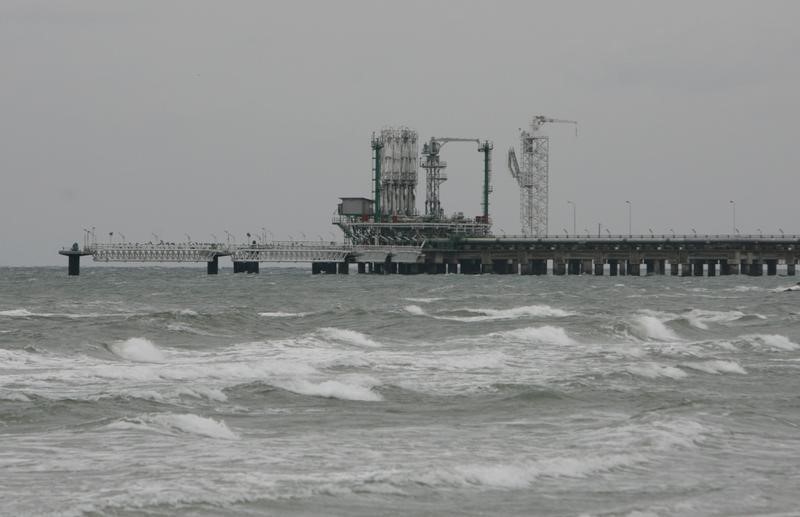Investing.com - U.S. natural gas futures struggled for direction on Tuesday, as market players continued to assess the damage from Tropical Storm Harvey.
U.S. natural gas for October delivery was at $2.962 per million British thermal units by 8:10AM ET (1210GMT), little changed on the day.
It fell to its lowest since August 9 at $2.880 on Monday, before reversing course to end 1.3% higher, as damage from Harvey was seen disrupting gas production in the Eagle Ford shale and the Gulf of Mexico.
Massive floods caused by Harvey forced several producers to scale back output along the U.S. Gulf Coast. The storm, which made landfall on Friday, is poised to regain strength before crashing ashore again near the Texas-Louisiana border Wednesday.
However, gains were held in check amid expectations that production losses would be more than offset by reductions in demand due to cooler temperatures and power outages.
Comfortable temperatures will continue over the central and east-central U.S. in the next five days, with highs only in the 70s to lower 80s as weather systems sweep through.
Natural gas prices have closely tracked weather forecasts in recent weeks, as traders try to gauge the impact of shifting outlooks on late-summer cooling demand.
Nearly 50% of all U.S. households use gas for cooling.
Total natural gas in storage currently stands at 3.125 trillion cubic feet, according to the U.S. Energy Information Administration, 6.7% lower than levels at this time a year ago but 1.4% above the five-year average for this time of year.
Early market expectations for this week's storage data due on Thursday is for a build in a range between 26 and 36 billion cubic feet in the week ended August 25.
That compares with a gain of 43 billion cubic feet in the preceding week, a build of 51 billion a year earlier and a five-year average rise of 67 billion cubic feet.
